Good first cars: Top five cars for young Australians drivers
Buying your first car – or your teen’s first car – can be a nerve-racking experience. Here are some ways to reduce your chances of buying a dud.
Car Advice
Don't miss out on the headlines from Car Advice. Followed categories will be added to My News.
The pandemic wasn’t kind to young people – and their parents – looking to buy their first car.
New-car supply shortages, which have only started to ease this year, sent used car prices soaring by more than 40 per cent.
That made it much harder to get a decent used car for an affordable price.
Used prices have eased in recent months, although the cost of living crisis has meant that the cheaper used cars are becoming more sought after – and therefore more expensive.
If you’re looking to buy a cheap first car – or you’re partly financing your teenager’s – there are some golden rules to follow to ensure that you get the best bang for your buck.
Safety, low running costs and reliability are must-haves for a first car.

SAFETY FIRST
RACV’s general manager of motoring, Jeff Ames, said parents should do their “due diligence” before helping their teen choose a first car.
“Ensuring a teenager or learner driver has the most appropriate vehicle for their age and driving goes a long way in providing driver confidence and safety,” Mr Ames said.
Inexperienced drivers are banned from driving powerful cars and most state regulators have easily accessible lists of banned cars to check before purchasing.
Mr Ames said that while smaller cars were often easier for inexperienced drivers to handle, they weren’t necessarily the safest option.
“Teenage and learner drivers tend to gravitate towards smaller cars as they are usually easier to handle on the road. However, just because a car isn’t taking up as much room on the road, it doesn’t mean that it’s the safest option. RACV recommends ensuring that the vehicle still has a decent safety rating by checking the ANCAP website,” he said.
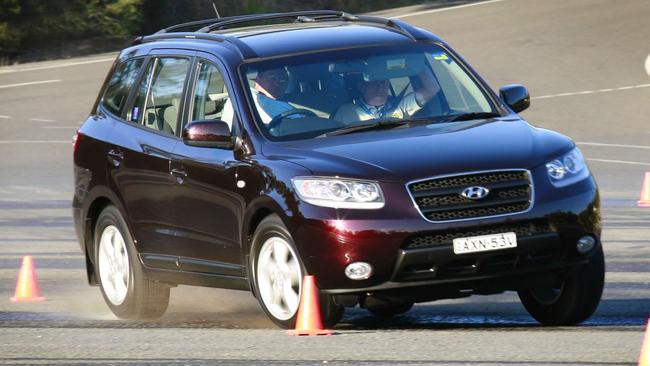
He also recommended checking a car’s vehicle history before buying to ensure it hadn’t been in a crash and had residual damage.
Experts also recommend checking for potentially lifesaving crash avoidance technology. This is typically listed in a “features and specifications” table on car classifieds sites.
Any car built after 2013 will have electronic stability control fitted as standard, but many built before then already had the technology.
Stability control can stop a car from losing control and will also stop the brakes from locking up.
The technology can keep a car travelling nose-first in an emergency rather than sideways, which is far more dangerous. There is less crash protection in a side-on impact and therefore a much greater risk of a fatality.
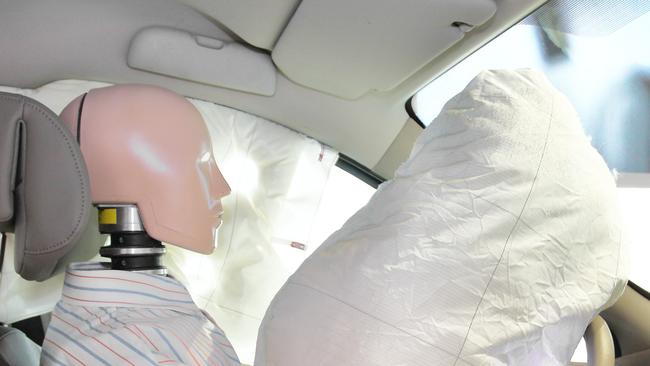
If you’re able to afford a later model car, look for automated emergency braking on the features list. This technology can anticipate if you’re about to hit the car in front – or a pedestrian or cyclist – and slam on the brakes if you fail to respond.
The technology began to appear on new cars in December 2015. By 2018 a third of new cars were fitted with it and by the end of 2021, roughly 90 per cent had it.
Apple CarPlay and Android Auto are other desirable features because they reduce the temptation for young drivers to reach for their phone while behind the wheel. Check your state regulations, though, as some – including New South Wales and Victoria – ban L and P-platers from making audio calls or sending and receiving text messages via Bluetooth or smartphone mirroring tech.
RELIABILITY
There’s nothing worse than stretching the budget for a car and then having to pay hundreds or thousands of dollars to fix mechanical problems.
Not to mention the inconvenience of waiting a long time for the car to be fixed.
The best safeguard is to pick a brand with a solid reputation for quality and reliability – and that generally means a Japanese or Korean-made vehicle.
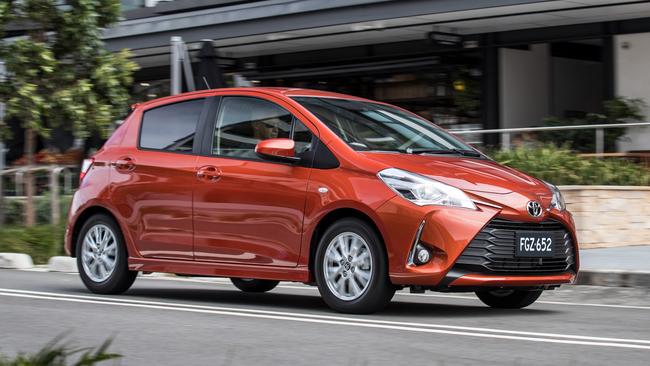
Brands such as Toyota, Mazda, Kia and Hyundai regularly top quality surveys overseas and those results are generally a good guide for the Australian market.
This year’s JD Power’s Vehicle Dependability Survey in the United States, which surveys car buyers after three years of ownership, ranked Toyota as number one of the mainstream brands. Other brands to produce above average results included Mazda and Kia, while Volkswagen and Ford – and many prestige European brands – ranked below the average.
Depending on how much you’re spending on that first set of wheels, it can make sense to pay for a pre-purchase inspection.
RedBook Inspect has packages ranging from $185 to $585.
Road regulators in each state typically publish handy checklists for inspecting used cars, with handy tips such as listening for a rough idle, checking for excessive smoke from the tailpipe and looking for grey or milky coloured oil, which could indicate an expensive to repair engine issue. (See breakout).
RUNNING COSTS
The younger the car, the less money it typically costs to keep on the road.
Many will recommend looking for a “low-mileage” car but sometimes a newer vehicle with more kilometres on the clock will be a better bet.
An older car may have done fewer miles, but a lot of components such as hoses and brackets perish with time.
A younger car is more likely to have been regularly serviced, as car makers have been offering attractively price capped servicing programs for some years, which encourage people to complete at least the first five years of servicing with the dealer.
If an owner can produce a complete service history for the car, that offers great peace of mind.
Japanese and Korean cars are usually cheaper to service and maintain as well, as parts are typically less expensive and more available.
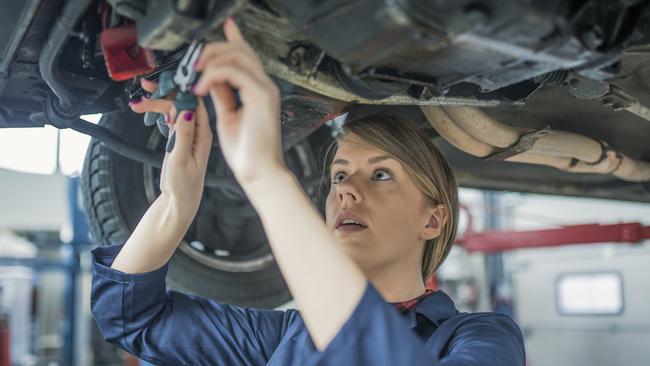
Parts usually last longer as well. For example, many European cars will need their brake discs replaced with every change of pads, while Japanese cars can usually have a new set of pads fitted without replacing the discs.
It also pays to set aside some money for a regular service. Modern cars will last forever if properly maintained, but even the most reliable can develop problems if the oil isn’t changed.
One mechanic we contacted said regular oil changes – there are YouTube videos showing you how to do them yourself – are the single most important maintenance you can carry out.
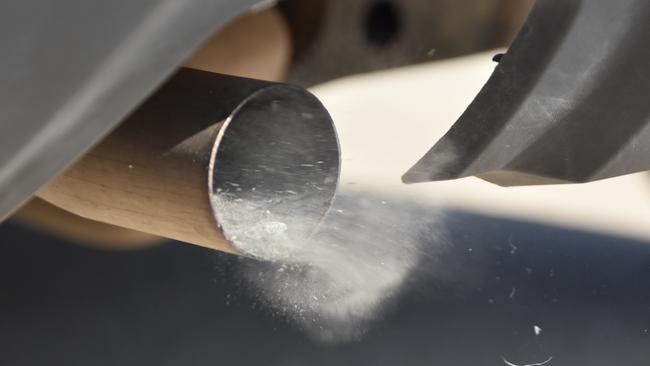
WARNING SIGNS
Here are some things to look out for when buying a used car.
●A build-up of dirt in the engine. Dirty, milky or thick oil and a build-up of sludge could indicate serious problems.
●A rough idling engine and excessive smoke from the tailpipe.
●Uneven wear on tyres, which could mean worn or damaged steering or suspension.
●Bald tyres, including the spare. It can cost between $600 and $1000 to replace them.
●Rust. Check the boot, door sills and footwells.
●Uneven paint. Could indicate damage and a respray.
●Frayed seatbelts.
●Warning lights on the dash.
●Weak airconditioning. Expensive to fix.
●Too much travel in the steering or wandering in a straight line.
●A spongy brake feel or screeching.
●Clunky auto gear changes.
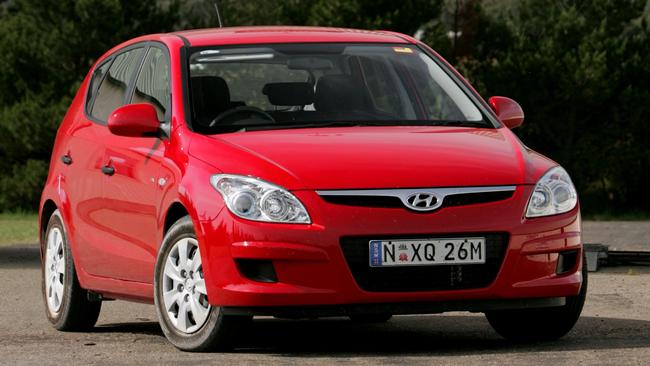
BEST FIRST CARS
HYUNDAI I30, 2007-23, From about $5,000 to $25,000
The original i30 won several awards, including News Corp Car of the Year, when it launched in 2007. You can pick up a high-kilometre, manual i30 for as little as $5000 from private sellers, but auto versions will set you back at least $7000. The original i30 has stability control and two airbags. There’s even a wagon for surfers and bike riders. From 2017, all models had a reversing camera, six airbags and Apple CarPlay/Android Auto. Decent examples start at $15,000. More expensive models had auto emergency braking, blind-spot warning and rear cross-traffic alert. A All were standard features from 2020, but you will pay $20,000+.
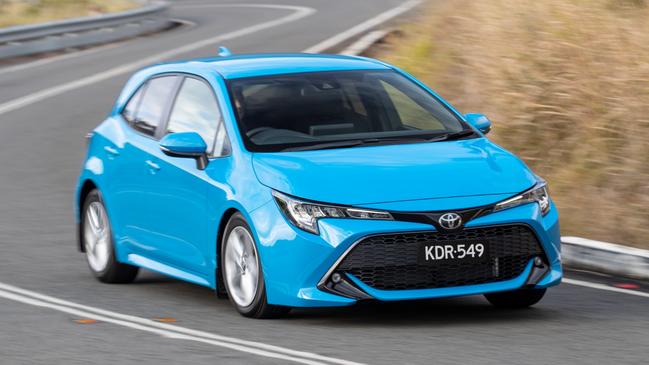
TOYOTA COROLLA, 2010-2018, From about $10,000 to $20,000
Toyota’s tenth-generation Corolla launched here in 2007 with two airbags but stability control wasn’t standard until 2010. The Corolla has an enviable reputation for quality and reliability. It will also hold its value better than most rivals. It’s not the most exciting thing to drive but it’s competent and efficient. Sharper looks and more equipment, including seven airbags, arrived with a new model in 2013. They start at about $13,000. Toyota introduced a hybrid version in mid-2016, which costs more but will save on fuel bills. The 2018 model featured crash-avoidance tech including auto braking, but you’ll need to stretch the budget to $20k.

MAZDA CX-3, 2017-23, From about $18,000 to $40,000
Many fashion-conscious teens will be looking for a compact SUV and Mazda’s CX-3 is a smart choice. It doesn’t have as much boot space as hatchbacks, but it looks great, drives well and comes loaded with tech and safety features. Pay a little more to get choose all-wheel-drive, another layer of protection for rookie drivers on wet surfaces. In mid-2017, the CX-3 became one of the first compact SUVs to have auto emergency braking as standard. That also operates in reverse, handy when reversing out of a driveway.
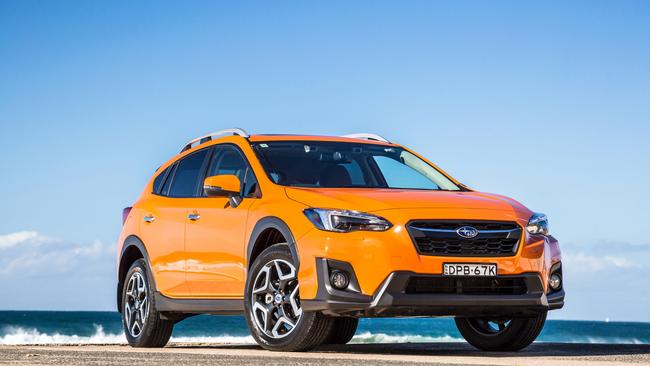
SUBARU XV, 2017-23, From about $20,000 to $40,000
Another compact SUV but a size bigger than the CX-3. It’s based on Subaru’s popular Impreza hatch and arrived in mid-2017. All but the cheapest model had auto emergency braking and lane-departure warning. This one is better than most compact SUVs at tackling gravel roads and light off-roading, thanks to a higher ride height and all-wheel-drive.
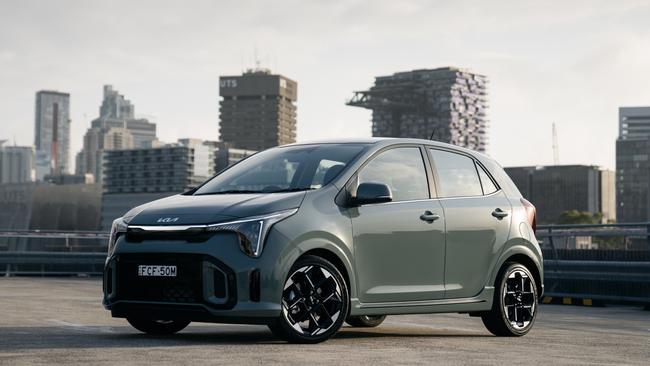
KIA PICANTO, From $20,690 drive-away
If you’re looking for peace of mind, then a new car removes all the anxiety that comes with buying a used car. The diminutive Kia Picanto starts at a tick over $20,000 (add $1000 for the auto) and what it lacks in size it makes up for in modern tech and a fun drive. The 1.2-litre is enough for young drivers and the fuel consumption won’t burn a hole in the pocket. It has all the latest tech and a seven-year warranty. A best-buy new.
SEARCHING FOR A FIRST CAR
Computer science student Charlie Lockwood is on the hunt for a new car.
“I’m looking at between about $8000 to $10,000 for a Toyota RAV4, Subaru Forester, Subaru XV or Honda CRV,” the 21-year-old said.
“I don’t think my parents are going to help out with buying it … but I’ve got a bit of money I can dip into.”
Mr Lockwood wanted to find something second-hand with a mileage below 150,000km, but found the price of second-hand cars spiked during Covid.
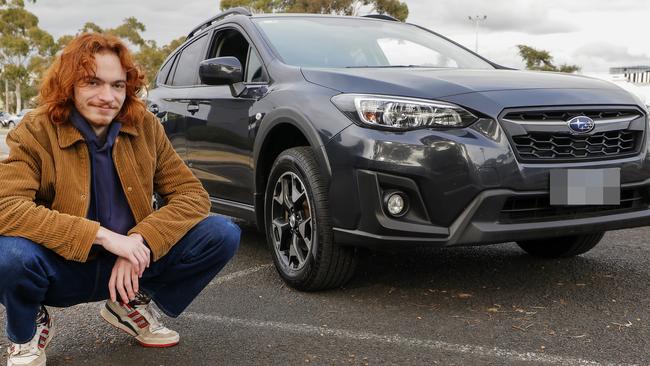
“I worked at Zagame Automotive and I was talking to them about what cars to get. They said there’s a sweet spot budget, where if you go any lower then you’re probably going to have to find a new car pretty soon,” he said.
“But if you go any higher you’re basically wasting your money. It’s your first car.
“But that sweet spot has gone up quite a bit recently from about $7000 to closer to $10,000 now.”
He is hoping that even with the price of fuel and registration he can keep his budget in check by cutting out the price of rideshare and commuting via public transport to university.
Originally published as Good first cars: Top five cars for young Australians drivers





